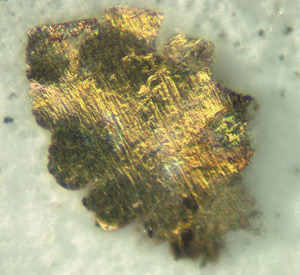Machines in harsh working environments always have a shorter life cycle and have higher chances of failure. Even with a manufacturer's warranty, the indirect downtime cost will still be significant.
The many fluid and particle condition monitoring tests that provide information about the current mechanical state of a system are a solution to this challenge but may not be able to answer all your questions. When you need to know the failure modes, wear debris analysis can give you a definitive answer. This test is non-destructive which means you do not need to open your machine to conduct this machine check.
Wear Debris Analysis
Separation and analysis of particles produced by wear processes can offer a solid foundation for machine condition monitoring. Oil samples, oil filters, and magnetic plugs are also sources for these particles which can be analyzed using a microscope, a scanning electron microscope, or energy-dispersive X-ray spectroscopy.
When it comes to wear debris analysis, the aim is to obtain maximum machine dependability at the lowest feasible cost. Several objectives must be set and met in order to achieve this goal. These goals provide the blueprint for using wear debris analysis to improve machine dependability.
Define the Operating Life
It's difficult to get accurate estimations of working machinery's remaining life. This information is useful in determining the appropriate preventive actions and the urgency with which they should be performed. Wear debris analysis, when paired with all available conditional data, may help determine how far wear has advanced and the minimum response time required.
Level of Severity and Residual Life
The use of wear debris analysis to determine the remaining usable life is continuously evolving, and there is still much to learn. The rate of change in wear metal production appears to be influenced by either the severity of the forcing function or the overall progression of the condition. Experience with previous difficulties can be beneficial in detecting current abnormal wear conditions and their severity levels in analytical ferrography.
Looking for Virgin Particles
The importance of visual inspection of particles in increasing the universe of information cannot be overstated. There are several methods for performing this, but the most prominent are glass slides and patch ferrography.
Finding the proper particles to study is often more important than interpreting the meaning and identity of particles discovered in a routine sample taken from a primary sampling port. Because older particles have been "reworked" by the machine and its surroundings through crushing, laminating, or corrosive action, they might become practically impossible to distinguish. This can make determining the wear mode and location extremely impossible. Used filters, sump sediment, magnetic plugs, chip collectors, and other similar sources are the ideal places to look for virgin particles.
Any particle larger than the filter's mean pore size could be a virgin particle in circulating systems with high-capture filters. While there may be a few of these particles, their appearance and composition could be quite important.
 Macro-2-Micro one-shot image of an oxidized particle on a filter patch shows surface detail that would not be visible using a microscope without extended focus capability.
Macro-2-Micro one-shot image of an oxidized particle on a filter patch shows surface detail that would not be visible using a microscope without extended focus capability.
Defining Wear Modes
Wear debris can include information about the machine's status after the composition has been determined. The mechanism of wear and the forcing function, on the other hand, may remain unknown. Attempts to mend or solve issues without addressing the root cause of failure will eventually lead to history repeating itself. This is often the case when oil or bearing is changed prematurely due to non-complying conditions.
Case Study: Application of Wear Debris Analysis
A hammer crusher is one of the pieces of equipment used in the cement manufacturing process. It is used to break down clinker, the primary output of cement kilns, into smaller pieces in order to prepare for grinding. The bearings used in the clinker crusher at a cement plant in Egypt are spherical roller bearings. A lithium complex grease with a synthetic base oil intended for high-temperature applications lubricates these bearings. Bearing defects and issues can interfere with the operations and overall productivity of the plant.
Vibration analysis was used to monitor the condition of the crusher as part of the predictive maintenance program of the plant. Wear debris analysis is also another technique they incorporated into their program. During one of their scheduled inspections, at a speed of 360 RPM, vibration monitoring of the outboard bearing in the third clinker crusher line produced no alarm indications. They also collected grease samples which were subjected to wear debris analysis. Spherical particles of varying sizes were observed which indicates the degree of severity of rolling-contact fatigue. They had to replace their outboard bearing upon visually confirming the condition of their bearing. This case study shows the effectiveness of condition monitoring based on grease debris detection, which can be a helpful tool for monitoring machine condition and should be integrated with diagnostic tools.
Source: machinerylubrication.com


